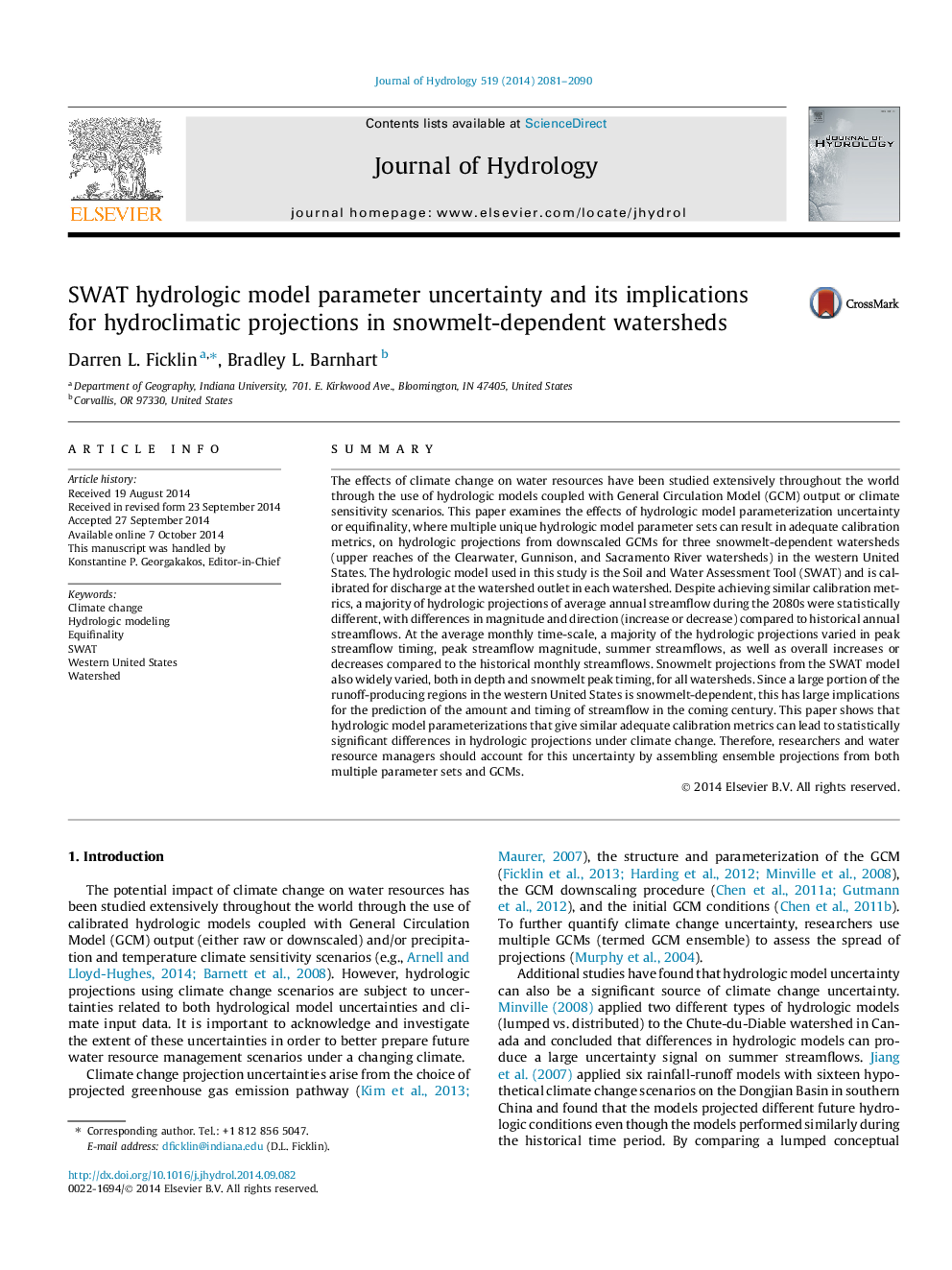| Article ID | Journal | Published Year | Pages | File Type |
|---|---|---|---|---|
| 6412069 | Journal of Hydrology | 2014 | 10 Pages |
â¢Annual streamflow projections were different despite similar calibration metrics.â¢Peak/timing of monthly streamflows varied despite similar calibration metrics.â¢Snowmelt projections varied in depth and snowmelt peak timing.â¢Parameters that give similar calibration metrics can lead to different projections.
SummaryThe effects of climate change on water resources have been studied extensively throughout the world through the use of hydrologic models coupled with General Circulation Model (GCM) output or climate sensitivity scenarios. This paper examines the effects of hydrologic model parameterization uncertainty or equifinality, where multiple unique hydrologic model parameter sets can result in adequate calibration metrics, on hydrologic projections from downscaled GCMs for three snowmelt-dependent watersheds (upper reaches of the Clearwater, Gunnison, and Sacramento River watersheds) in the western United States. The hydrologic model used in this study is the Soil and Water Assessment Tool (SWAT) and is calibrated for discharge at the watershed outlet in each watershed. Despite achieving similar calibration metrics, a majority of hydrologic projections of average annual streamflow during the 2080s were statistically different, with differences in magnitude and direction (increase or decrease) compared to historical annual streamflows. At the average monthly time-scale, a majority of the hydrologic projections varied in peak streamflow timing, peak streamflow magnitude, summer streamflows, as well as overall increases or decreases compared to the historical monthly streamflows. Snowmelt projections from the SWAT model also widely varied, both in depth and snowmelt peak timing, for all watersheds. Since a large portion of the runoff-producing regions in the western United States is snowmelt-dependent, this has large implications for the prediction of the amount and timing of streamflow in the coming century. This paper shows that hydrologic model parameterizations that give similar adequate calibration metrics can lead to statistically significant differences in hydrologic projections under climate change. Therefore, researchers and water resource managers should account for this uncertainty by assembling ensemble projections from both multiple parameter sets and GCMs.
